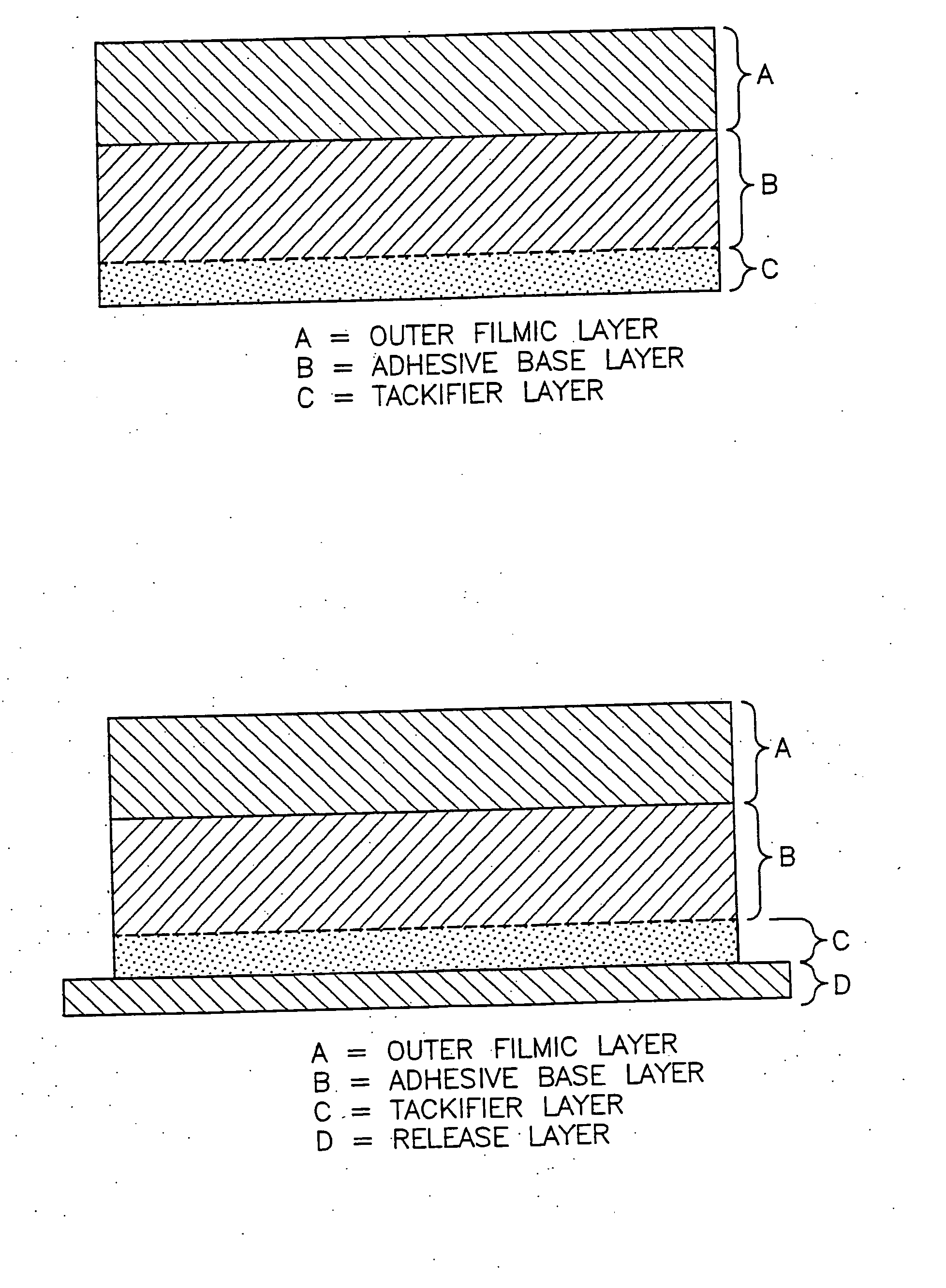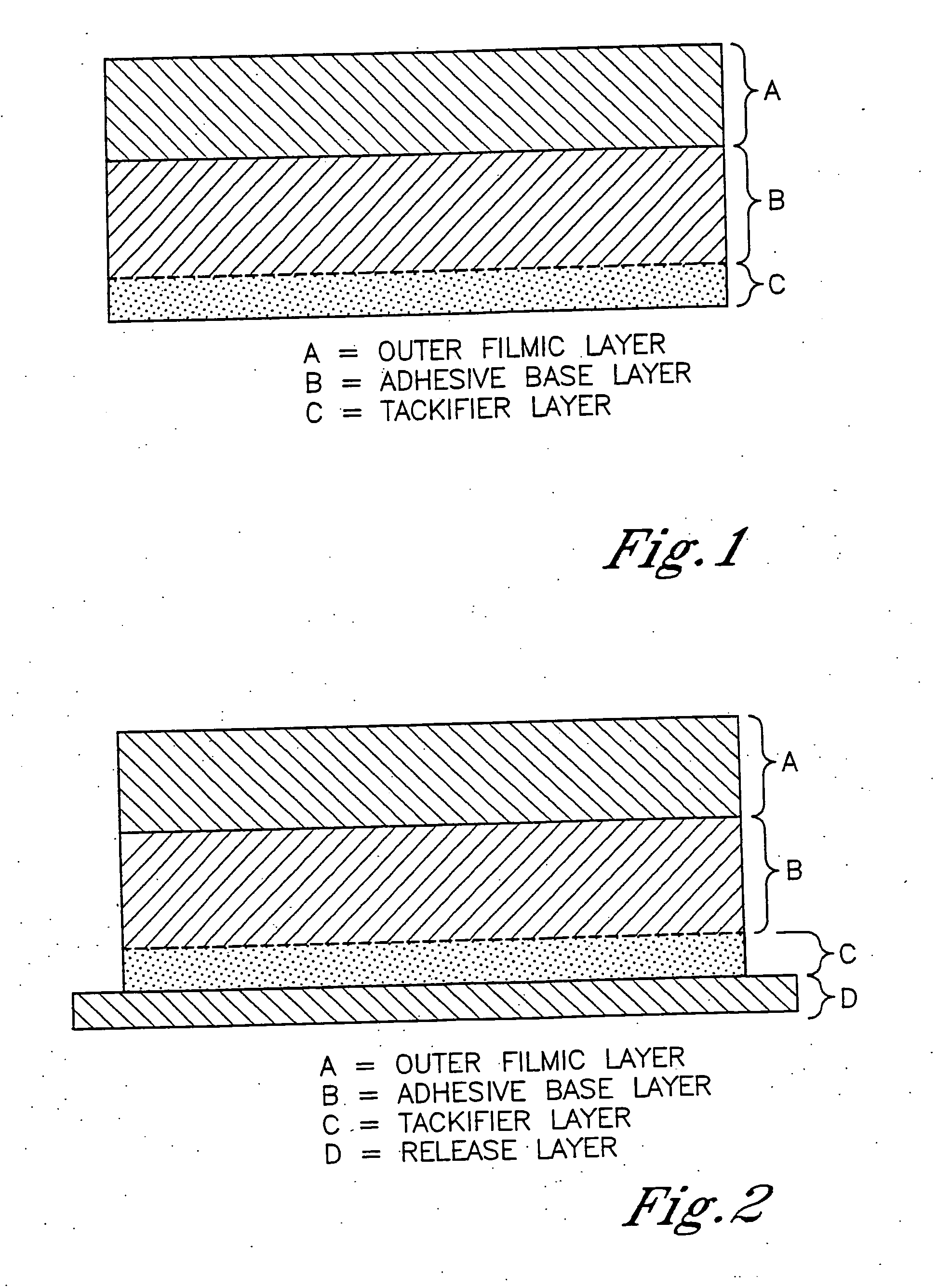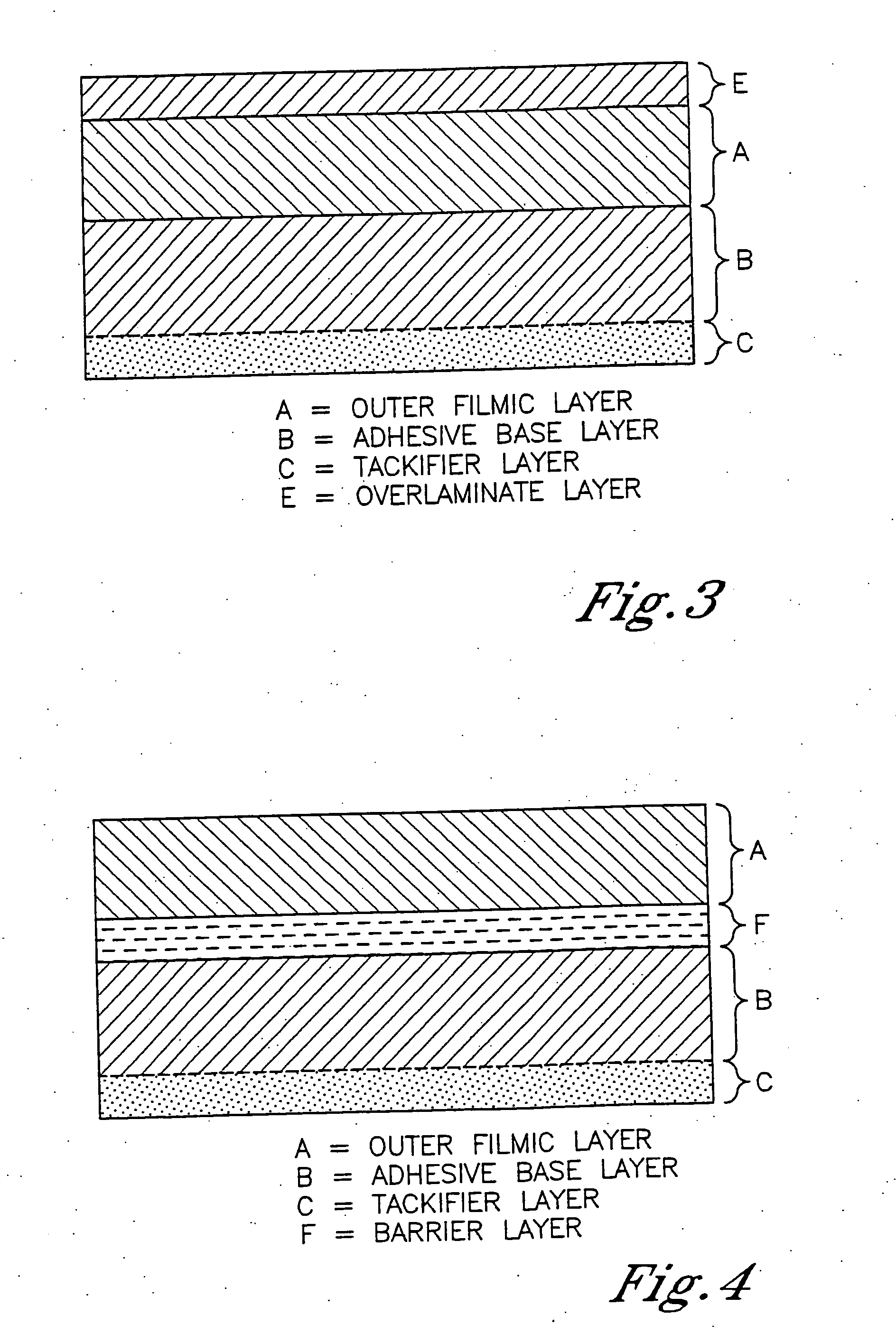Pressure sensitive adhesives (PSA) laminates
- Summary
- Abstract
- Description
- Claims
- Application Information
AI Technical Summary
Benefits of technology
Problems solved by technology
Method used
Image
Examples
example 1
Preparation of Non-Adhesive Laminates 1.1-1.10
[0128] A non-adhesive laminate comprised of an outer filmic layer of primarily polypropylene (PP) (80%) and an adhesive base layer of Kraton G1657 TPE (20%) was made on a coextrusion line operating with two Killion 1 inch single screw extruders with 24 / 1 L / D. The output from the two extruders directly entered a combining block adaptor where the two flow streams were combined to form a 2 layer flow profile with the adhesive base layer (Kraton TPE) on top to produce a combined polymer melt stream. The combined polymer melt stream entered a 6 inch wide film die where the flow profile spread out into the final laminate dimension to produce the non-adhesive laminate. The non-adhesive laminate was cast onto a chill roll at 30° C. and wound into rolls with release paper applied between the layers to prevent possible sticking. The extrusion parameters are tabulated below.
TABLE 1LayerChillExtruderZone 1Zone 2Zone 3RpmFeedblockDieThick-nessRollK...
example 2
Coating of Oriented, Nonadhesive Laminate Specimens 1.9 and 1.10
[0133] Oriented non-adhesive laminates 1.9 and 1.10 that had been oriented 3×3 to a nominal 95 microns thickness having an adhesive base layer of Kraton G-1657 copolymer about 16 microns thick were noted to possess negligible adhesive properties. A solution of Regalrez 1018 liquid hydrogenated tackifier resin in cyclohexane was coated onto the surface of the adhesive base layer of the oriented, non-adhesive laminate using a wire wrapped coating rod to produce PSA laminates 2.1, 2.2, and 2.3. Enough cyclohexane was added to reduce the viscosity so that the tackifier resin could be easily coated. The coating was performed so that the amount of dried Regalrez 1018 applied was about 30%-40% by weight of the starting nonadhesive laminate specimen weight.
[0134] Initially, the surface of PSA laminates 2.1, 2.2, and 2.3 were very slimy due to the coating of the liquid tackifier resin. After aging the PSA laminates for 2 hours ...
example 3
Coating of Oriented Nonadhesive Laminate Specimens 1.6 and 1.7
[0136] Specimens of oriented nonadhesive laminate samples 1.6 and 1.7 were coated with an 80% solution of Regalrez 1018 tackifier resin in cyclohexane using a wire wrapped rod in order to achieve a dried coating weight applied to the surface of the adhesive base layer (Kraton G TPE) amounting to about 40% to 50% by weight of the starting oriented non-adhesive laminate weight to produce PSA laminates 3.1-3.4. The starting oriented non-adhesive laminates exhibited minimal tack or adhesion properties, but after coating, drying, and aging the PSA laminates for 1 hours at 60° C., the PSA laminates were noted to behave like a PSA. The PSA laminates were cut into 1 inch wide specimens applied to stainless steel panels to form test specimens for both 1800 peel testing and loop tack testing. The 180° peel values were measured using ASTM D-3330 as a guide. Loop tack adhesion values were measured using ASTM D-6195 method as a guide....
PUM
| Property | Measurement | Unit |
|---|---|---|
| Temperature | aaaaa | aaaaa |
| Temperature | aaaaa | aaaaa |
| Weight | aaaaa | aaaaa |
Abstract
Description
Claims
Application Information
 Login to View More
Login to View More - R&D
- Intellectual Property
- Life Sciences
- Materials
- Tech Scout
- Unparalleled Data Quality
- Higher Quality Content
- 60% Fewer Hallucinations
Browse by: Latest US Patents, China's latest patents, Technical Efficacy Thesaurus, Application Domain, Technology Topic, Popular Technical Reports.
© 2025 PatSnap. All rights reserved.Legal|Privacy policy|Modern Slavery Act Transparency Statement|Sitemap|About US| Contact US: help@patsnap.com



